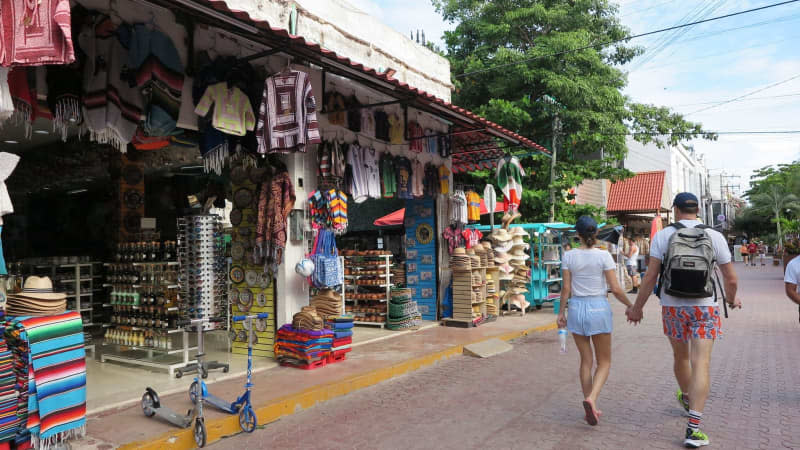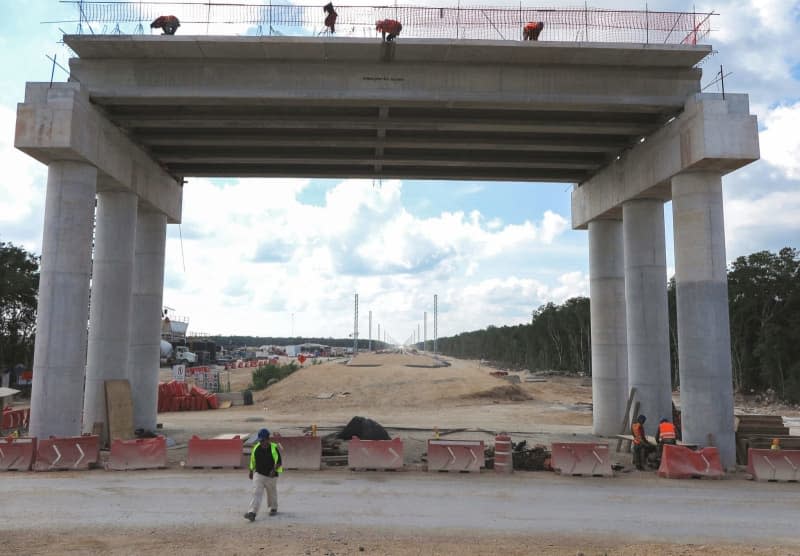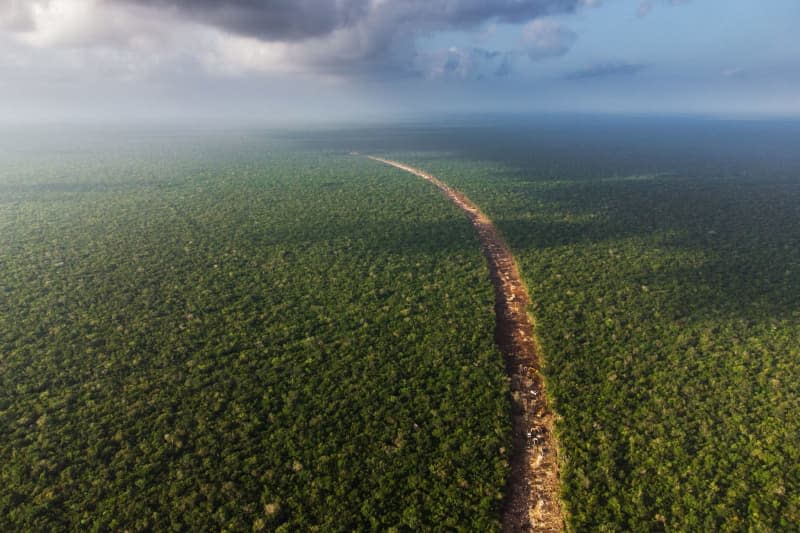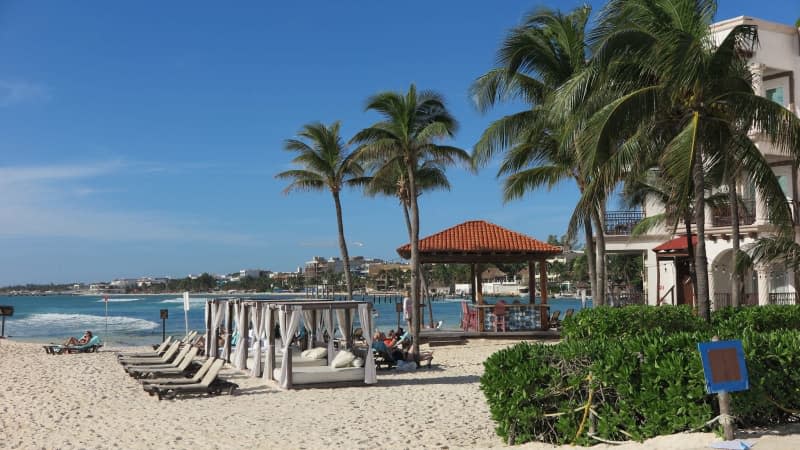What Mexico's Tren Maya megaproject means for the rainforest
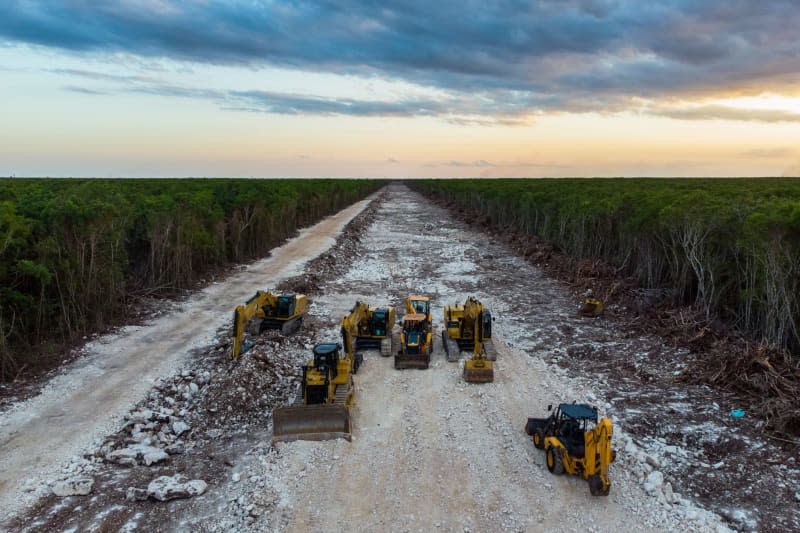
Speleologist - or cave expert - Roberto Rojo knows the jungle like his own backyard, but what he is currently seeing on Mexico's Yucatán Peninsula is unlike anything he's ever witnessed before.
A long, deforested swathe now cuts through the rainforest south of the popular holiday resort of Cancún on the tip of the southeastern peninsula. Thousands of large construction pillars penetrate the ground every 15 metres in anticipation of the Tren Maya, a new railway line being created to ferry millions of tourists from the Caribbean beaches through to various ancient Maya sites in the rainforest across the Yucatán Peninsula.
While the massive infrastructure project is hoped to bring a needed tourism boost to a relatively poor region of the country, environmental groups and indigenous communities have criticized the construction over what it could do to region's nature life.
The first section of the 1,554-kilometre train network was inaugurated in December, following three and a half years of construction.
"The Tren Maya will bring economic and social development to the south-east," said President Andrés Manuel López Obrador.
But all that's currently visible to Rojo at the dusty construction site near Playa del Carmen, a resort on Mexico's Caribbean coast, is destruction. López Obrador's megaproject cuts the rainforest in half and causing irreversible damage to the ecosystem, says the biologist and activist.
"Down there is the aquifer on which all the plants, animals and people in the region depend," says Rojo, referring to the underwater cave system in the area.
The Tren Maya will initially run between San Francisco de Campeche on the Gulf of Mexico and Cancún in the Caribbean. The route is 473 kilometres long and runs partly on a former railway line. By the end of February, the entire network with 34 stops in five states should be complete, including the most controversial sections through karst areas and rainforest.
Mexcio's Amazon rainforest
Elias Siebenborn, a German native who's been living in the region for 12 years and works as a travel guide, has been documenting the effects of the megaproject on the environment.
Equipped with a GPS device, he sets up in the middle of nowhere and sends off his drone over the dense vegetation until it comes across the railway line. "You can see it here," he says, pointing to the live image transmitted by the UAV: a kilometre-long track cuts through the previously untouched lush green.
The German has already documented 121 small, medium and large underground caves along the railway line between Playa del Carmen and Tulum, a city home to ancient Maya ruins perched on a cliff overlooking the Caribbean Sea - a major draw for tourists.
Underground rivers criss-cross the Yucátan Peninsula through the cave system all the way to the sea.
"I used to go into the rainforest to photograph birds," Siebenborn says. But when construction on the Tren Maya began, he started recording the damage caused by the project. "I would never have thought how extreme it was."
The Selva Maya stretching across Mexico, Guatemala and Belize is the largest rainforest area in the Americas after the Amazon, home to the ruins of the mighty Mayan city Chichen Itza.
The site will be among those connected by the new railway line, which will also include tracks for normal passenger and cargo trains.
Operated by the army
Manuel Andrew has high expectations for the Tren Maya. The 48-year-old works as a porter in a hotel near the future railway station in Cancún. "Communities that had fallen into oblivion will now experience a boost from tourism because the train will stop there," he says.
Local residents will benefit as they will be able to sell their crafts directly to tourists or work in the hotels, according to Andrew. "What else do the opponents of the train propose so that people can move forward? If they come up with another project that creates economic opportunities without harming the rainforest, I would also go along with it," he says.
Costs for the railway line, which is managed by the military, have tripled to 500 billion pesos ($29 billion) since construction began.
European companies are also involved in the project, with a subsidiary of German national railway operator Deutsche Bahn acting as a consulter, for example.
The Mexican armed forces meanwhile are building six hotels, including one located inside the Calakmul natural reserve which is also home to archaeological ruins as well as some of Mexico's last remaining jaguars. Communal land has been expropriated or bought up and the property business is booming.
No other country in the world has implemented a railway project of this size in such a short time, says Mexico's President López Obrador. His critics agree with him on this point but stress that this has come at a cost for the environment: construction was carried out too quickly, with a lot of improvisation and without the obligatory environmental protection reports, says Aarón Hernández from the Mexican Centre for Environmental Law (CEMDA) in Cancún.
When lawsuits against the Tren Maya started piling up, the left-wing nationalist president simply declared the project a matter of national security under the control of the military to prevent it from being stopped. The railway line has also led to divisions within communities, while human rights activists criticize the militarization of the region.
A new US border
In Mérida, the capital of the economically up-and-coming state of Yucatán, the mood is buoyant as the city, which is on the first route of the train, gears up for more tourists. Street paving is being renewed, house facades are being repainted and new restaurants are being built. Yucatán, home to the country's remaining Mayan communities, is considered the safest state in Mexico.
However, the development plans are not limited to tourism. According to Governor Mauricio Vila, Yucatán is looking to become Mexico's "new border with the US" - in an economic sense. A harbour on the Gulf of Mexico is being expanded for the export of goods and new industrial parks are being built. Meanwhile, the Tren Maya rail network is linked to another project of the López Obrador government - the industrial Interoceanic Corridor between the Pacific and the Atlantic.
Tren Maya is part of an economic plan that is being implemented at the expense of natural resources, local people and their culture, says activist Rojo in Playa del Carmen. "Some people think we live from tourism. But we live from nature, which attracts tourists. If we ignore nature, we will have neither tourism nor nature and therefore no income."
